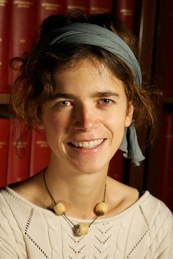
Aglaé Kellerer
40386 North Shore Lane,
Big Bear City,
California 92314 USA
Tel: 1-909-866-5791 Ext: 34
E Mail: kellerer (at) bbso.njit.edu
The aim of my research is to combine mathematics, physics and engineering in order to sharpen the performance of astronomical instrumentation.
In this context, I am currently working on a multi-conjugate adaptive optics system that will greatly enhance the performance of the New Solar Telescope, on Big Bear Lake, California. Indeed, it will allow to attain diffraction-limited resolution over an entire sunspot or active region. Solar observations are today largely motivated by our increased vulnerability to solar events. A repetition of the 1859 solar super-storm, where telegraph systems across the world became inoperable, would have devastating consequences today. The observation of remote, but related solar structures will give us new insights into the mechanisms of space weather. Eventually, solar physics will be understood well enough to allow reliable forecasts and timely warning periods.
Even if my research primarily addresses astronomy, it is my general ambition to improve instrumentation as it is required in other domains such as ophthalmology. While astronomers correct wavefront distortions caused by atmospheric turbulence, ophthalmologists need to account for the imperfections of the eye, i.e. for the wavefront disturbances due to the cornea, lens and vitreous humor. Wavefront sensors are also used in microscopes to measure index fluctuations in biological tissues. On a quite different scale the turbulence generated by an airplane during take-off can likewise be measured with a wavefront sensor, and this is an issue of special relevance today as increasing air traffic density and the use of ever larger planes make the time-span between take-offs a critical issue.
Current wavefront sensors – developed when such mirrors had 10-100 actuators – do not measure the phase distortion directly, but its slopes or curvatures. Mirrors with several thousand actuators are presently being considered for the upcoming extremely large telescopes. This development will make it impractical – in terms of computing times as well as error propagation – to determine the phase indirectly by measuring its first derivatives (e.g. with Shack Hartmann sensors) or its second derivatives (e.g. with Roddier Curvature sensors).
I am interested in developing direct phase-sensing techniques, and advance them to operational applicability. This is to be seen in the broader context of the development of operating systems for the future extremely large telescopes.
Research Interests

